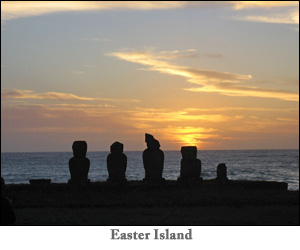 The world is becoming ever smaller. It seems that no matter where you go there are people – and lots of them. With the world’s population hitting 7 billion in the last year, there’s no room left to squeeze anyone in – and definitely nowhere to hide.
The world is becoming ever smaller. It seems that no matter where you go there are people – and lots of them. With the world’s population hitting 7 billion in the last year, there’s no room left to squeeze anyone in – and definitely nowhere to hide.
That’s what we want from our adventure tours after all, isn’t it? Somewhere to hide, far from the madding crowd? If you look at some of these, you might be tempted to think again.
1 – Motuo County, China
Completely untainted by the modern world, Motuo County is believed to be the last Chinese county that has no road leading to it. Situated in Tibet on the southern side of the Himalayas, Motuo means ‘hidden lotus’ and is considered to be Tibet’s holiest region by Buddhist Scripture.
A visit to this breathtaking land with its 10,000 inhabitants entails a grueling trek through some of the harshest parts of the Himalayas before inching your way across a 200m long suspension bridge. All attempts at building some sort of access road have been thwarted by mudslides, avalanches and the like. You know something? It looks like they didn’t really mean you to visit after all.
2 – Easter Island
Found 2,000 miles off the western coast of Chile in the expanse of the Pacific Ocean, Easter Island – or Rapa Nui – is renowned both for its isolation and its sacred statues or Moai dotted along its beaches and coastline. Hewn from the rough stone of the island’s volcano, there are over 600 statues scattered around the island.
The average statue stands at 14ft 6in and weighs in at 14 tons – and looks quite scary to me. Apparently they were dragged along to the beaches sometime around 1500 by the island’s first inhabitants. Earning its name after Dutch explorer Jacob Roggeveen landed there on Easter Sunday in 1722, 4,000 people still live there today.
3 – La Rinconada, Peru
If a bit of a trek is more what you had in mind for this year’s break then the isolated and perilous town of La Rinconada will present a challenge to those seeking the most adventurous walking holidays. Set in the Peruvian Andes and believed to be the world’s highest city at nearly 17,000ft above sea level this has to be one of the most desolate places on earth. Lying on a glacier, it can only be reached by truck (or a long, arduous stagger) along winding mountain roads – yet 30,000 people still live there. It’s obviously due to the gold which is mined from beneath the ice.
If you survive the inevitable altitude sickness prepare yourself for shanty town living conditions. Throw in the risk of mercury poisoning due to the mining practices coupled with the complete lack of sanitation and I’d suggest a nice walk in the country instead.
4 – Tristan de Cunha
Far from being the name of an up and coming posh British actor, Tristan de Cunha is the most remote inhabited place on the planet. It’s actually an archipelago of small islands randomly found in the southern Atlantic Ocean, 1,700 miles from South Africa and 2,000 miles from South America. And what’s more, it’s British!
This home to under 300 people is dominated by a live volcano which last erupted in the early 1960s. Discovered in 1506 by a Portugese explorer, the British soon got their hands on it and most of the inhabitants are descendants of the original settlers. The rocky terrain makes the prospect of an airstrip impossible and it can only be reached by boat. Few people go in, few come out and one of its neighboring islands is aptly named Inaccessible. They do have internet access now though so what’s stopping you?
If isolation and adventure tours are your thing there are plenty of options to avoid civilization. For those of you who like your beaches a little less deserted… well, Benidorm is supposed to be nice at this time of year but don’t quote me on that.
About the author: Kate Smedley tours the globe looking for unusual destinations for walking holidays.
Credits: Photo courtesy of Matt Riggott.